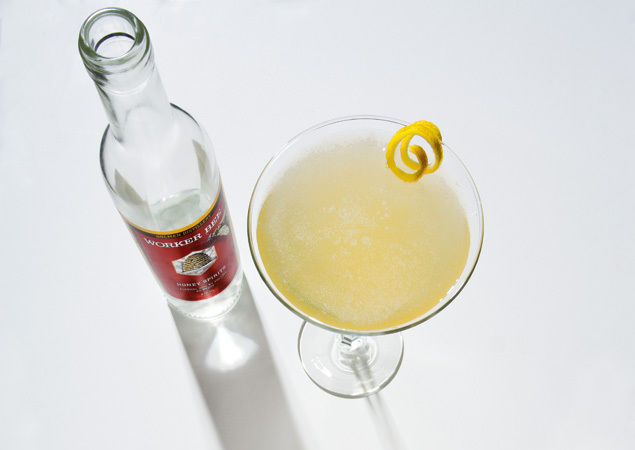Hive Minded

Image: Bruce Wolf
AS A CHILD, Anders Johansen was captivated by tales of brave Vikings sailing the seas and vanquishing foes while swilling liquor by the stein. So it’s not surprising that when he began tinkering with home brewing in the mid-1980s, he decided to try his hand at that storied, honey-based Nordic quaff of yore: mead.
“I think mead was probably the first fermented alcohol, even before beer,” Johansen says. “Beer takes a little more thought. All you have to do to honey is dilute [it], and it automatically starts fermenting.”
Perfect for Johansen’s lumbering inner Viking. Not that he didn’t try to go straight—he tackled the standard stouts, lagers, and ciders during stints at such landmark Oregon breweries as Pyramid and Deschutes. But his inquisitive nature eventually led him back to the drink of the Scandinavian rovers, and when he decided to launch Dolmen Distillery in McMinnville, he returned to the simple, ancient essence of mead. The result is Worker Bee, an 80-proof clear spirit distilled from fermented honey. Despite its sugary foundation (more than two pounds of honey go into each $20 bottle), Worker Bee isn’t cloyingly sweet like a liqueur; rather, it’s a sharp, fiery elixir. The honey’s floral notes emerge mostly on the nose and in the finish. Johansen uses only Oregon honeys in his distillate—mostly clover and blackberry, though he’s constantly playing with other varieties, such as earthy buckwheat or spicy chicory.
Johansen prefers his Worker Bee neat, maybe finished with a small flake of ice to help open the flavors, or warmed over a glass of hot water with a cinnamon-stick stirrer. But because that may be more firepower than you care to use on your own honey this Valentine’s Day, we suggest tempering the sting with judicious mixing. Worker Bee plays quite well with the flavor of ginger, and, unsurprisingly, it marries naturally with honey, as in this riff on the Bee’s Knees, a traditionally gin-based cocktail.




